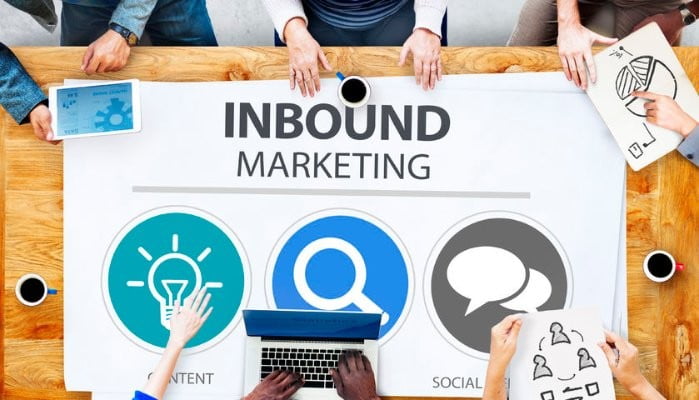In today’s competitive marketplace, where consumer preferences are continually evolving, mastering inbound customer engagement is not just a strategic advantage but a necessity for business success. Inbound customer engagement focuses on attracting, interacting with, and retaining customers by providing valuable content and experiences that align with their needs and interests. To achieve this, businesses must implement effective strategies that foster genuine connections and drive long-term loyalty. This article delves into the key elements of mastering inbound customer engagement and offers actionable strategies for success.
Understanding Inbound Customer Engagement
Inbound customer engagement refers to the process of drawing customers into your brand through valuable content and interactions rather than pushing marketing messages onto them. Unlike outbound marketing, which relies on direct approaches such as cold calls and advertisements, inbound engagement emphasizes creating content that resonates with your target audience, thereby attracting and retaining customers organically.
Key Elements of Inbound Customer Engagement:
- Content Marketing: Providing valuable and relevant content that addresses customer pain points and interests.
- Personalization: Tailoring interactions and content to individual customer preferences and behaviors.
- Customer Experience: Creating seamless and enjoyable experiences across all touchpoints.
- Feedback and Interaction: Engaging in two-way communication with customers to understand their needs and gather insights.
Strategies for Success in Mastering Inbound Engagement

To master inbound customer engagement and drive success, businesses must adopt a strategic approach that encompasses various tactics and best practices. Here are some effective strategies for success:
1. Develop a Customer-Centric Content Strategy
Creating content that speaks directly to your audience’s needs and interests is fundamental to mastering inbound engagement. A well-defined content strategy should include:
- Buyer Personas: Develop detailed profiles of your ideal customers, including their demographics, interests, and pain points. This helps in creating content that resonates with their specific needs.
- Content Planning: Plan your content calendar around topics that matter to your audience. Use a mix of blog posts, videos, infographics, and social media updates to engage different segments of your audience.
- Value-Driven Content: Focus on delivering content that provides real value, whether through educational resources, how-to guides, industry insights, or problem-solving tips.
Example: A software company might create a series of blog posts and videos that offer solutions to common challenges faced by their target audience, such as optimizing software for increased productivity or navigating industry regulations.
2. Leverage Personalization Techniques
Personalization is a key driver of inbound customer engagement. By tailoring your interactions and content to individual preferences, you can create a more relevant and engaging experience for your customers.
- Behavioral Data: Use data from customer interactions and behaviors to personalize content and recommendations. This can include browsing history, past purchases, and engagement patterns.
- Dynamic Content: Implement dynamic content that changes based on user profiles or behaviors. For example, display different offers or product recommendations depending on a user’s past interactions with your brand.
- Email Personalization: Customize email campaigns with personalized subject lines, content, and offers based on user preferences and past interactions.
Example: An e-commerce site can use browsing history to recommend products that a customer has shown interest in, or an online course provider might suggest courses based on a user’s previous course completions.
3. Enhance the Customer Experience
A seamless and enjoyable customer experience is crucial for inbound engagement. Ensuring that customers have positive interactions with your brand can significantly impact their loyalty and willingness to engage with your content.
- Omnichannel Approach: Provide a consistent experience across all channels, including your website, social media, email, and customer service. This ensures that customers receive a unified brand experience no matter how they interact with you.
- User-Friendly Design: Ensure that your website and other digital platforms are easy to navigate, with intuitive design and clear calls to action. A user-friendly interface improves engagement and reduces friction.
- Responsive Support: Offer timely and helpful customer support through various channels, including live chat, email, and social media. Prompt responses to inquiries and issues contribute to a positive customer experience.
Example: A retail brand might use a chatbot on their website to assist customers with product searches and provide instant support, enhancing the overall shopping experience.
4. Foster Two-Way Communication
Engaging in two-way communication with customers allows you to gather valuable feedback, address concerns, and build stronger relationships. This interaction is a crucial component of mastering inbound customer engagement.
- Social Media Engagement: Actively participate in conversations on social media platforms. Respond to comments, messages, and reviews to show that you value customer input and are attentive to their needs.
- Surveys and Feedback Forms: Use surveys and feedback forms to gather insights on customer satisfaction and preferences. This data can inform your content strategy and overall engagement approach.
- Community Building: Create and nurture online communities or forums where customers can share their experiences, ask questions, and interact with your brand and other customers.
Example: A tech company might host a user forum where customers can discuss product features, share tips, and provide feedback directly to the company.
5. Utilize Data and Analytics
Data and analytics are essential for refining your inbound customer engagement strategies and measuring their effectiveness. By leveraging insights from data, you can make informed decisions and continuously improve your approach.
- Performance Metrics: Track key performance metrics such as website traffic, engagement rates, conversion rates, and customer satisfaction scores. Analyze these metrics to evaluate the success of your content and engagement efforts.
- A/B Testing: Conduct A/B testing on different content variations, email campaigns, and website elements to determine what resonates best with your audience. Use the results to optimize your strategies for better engagement.
- Customer Insights: Analyze customer data to identify trends, preferences, and pain points. Use these insights to tailor your content and interactions to better meet customer needs.
Example: A travel company might use analytics to track the performance of blog posts about travel destinations, identifying which topics generate the most engagement and adjusting their content strategy accordingly.
Conclusion
Mastering inbound customer engagement is a multifaceted endeavor that requires a strategic approach and a deep understanding of your audience. By developing a customer-centric content strategy, leveraging personalization techniques, enhancing the customer experience, fostering two-way communication, and utilizing data and analytics, you can create a powerful inbound engagement framework that drives success.
Implementing these strategies will help you build stronger connections with your customers, attract and retain loyal followers, and ultimately achieve your business goals. As the landscape of customer engagement continues to evolve, staying adaptable and focused on delivering value will be key to maintaining a competitive edge and ensuring long-term success in mastering inbound customer engagement.





